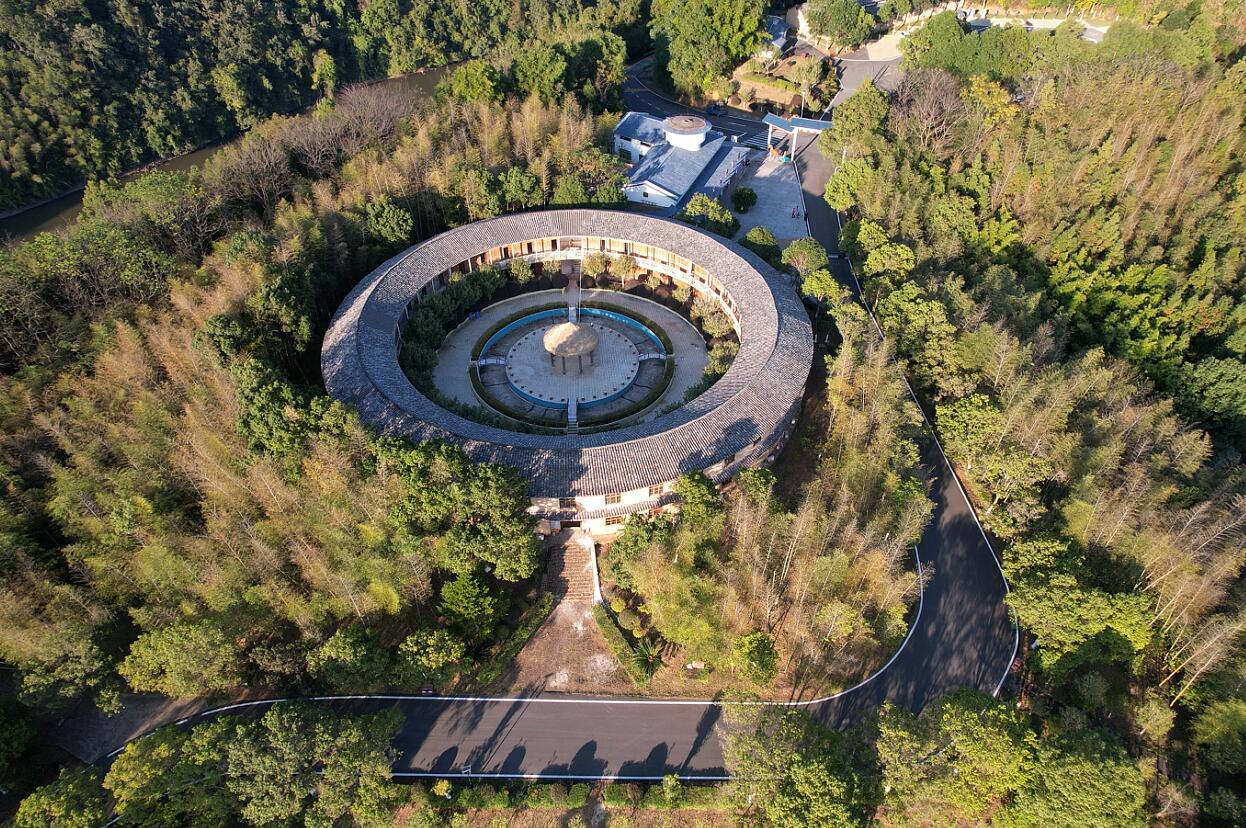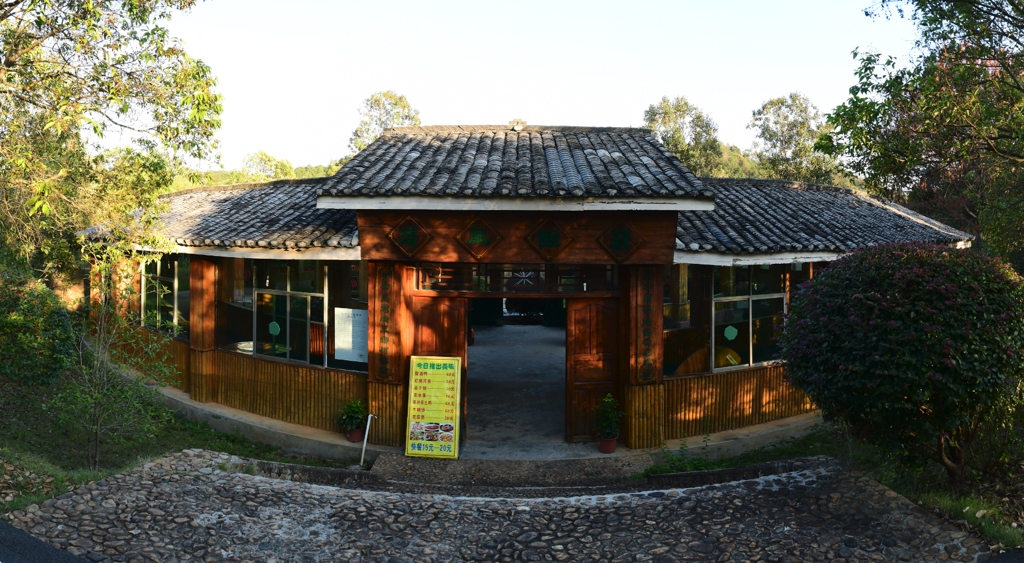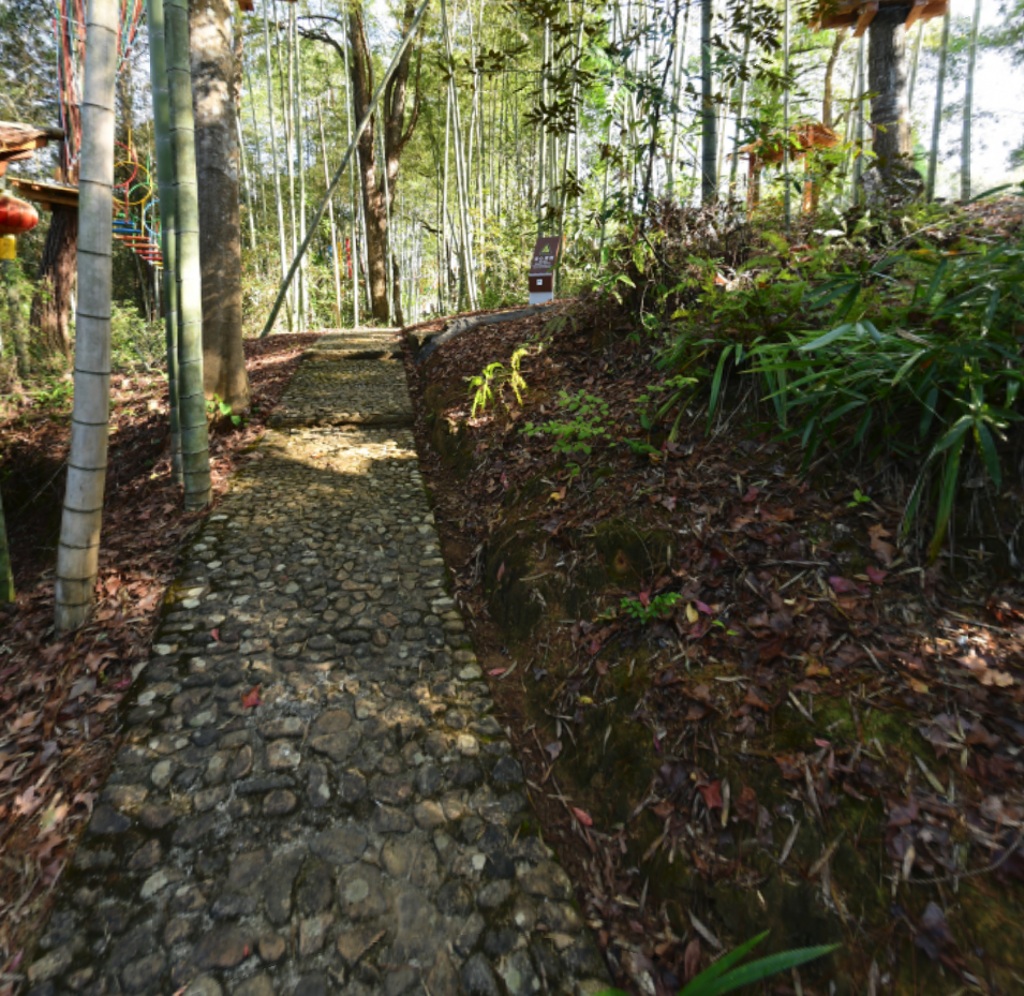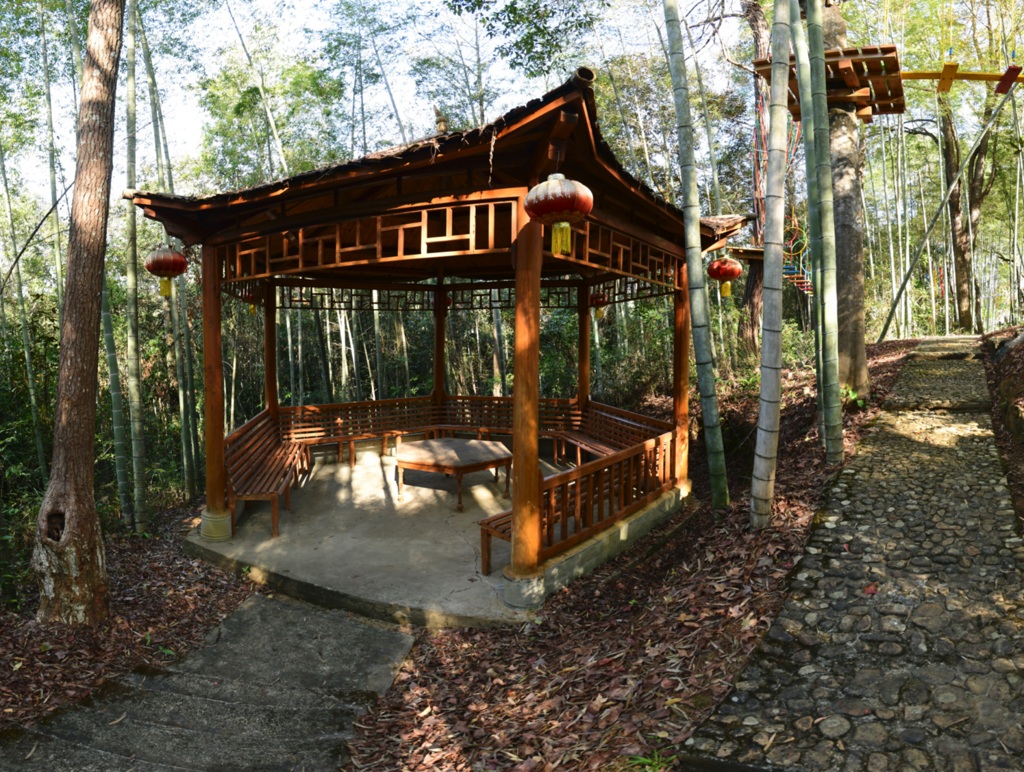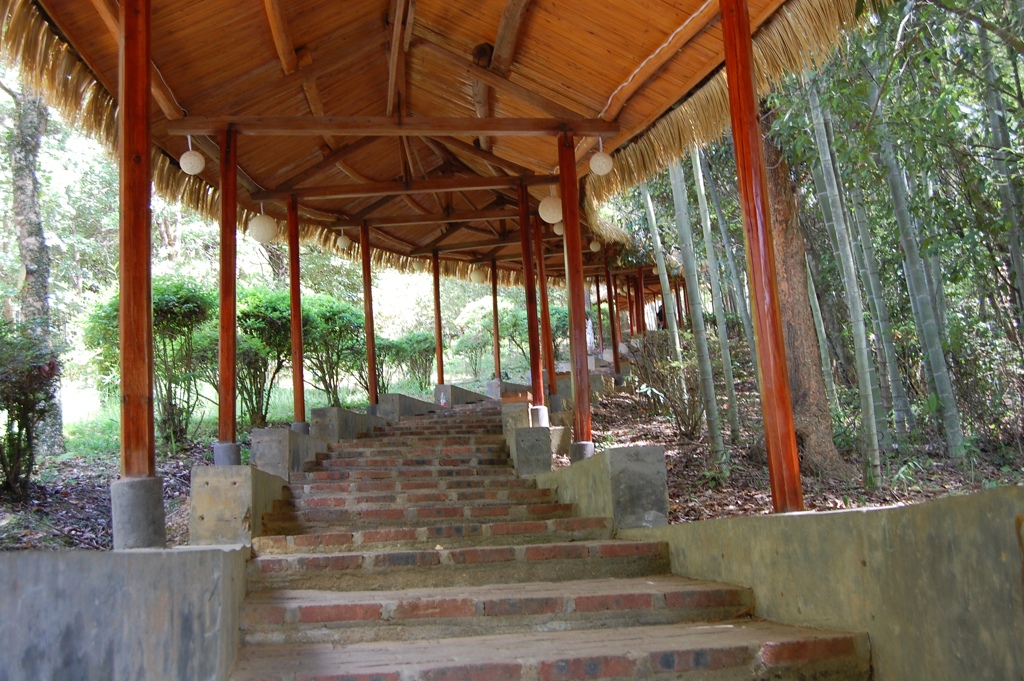Hakka Culture Corridor
Hakka cultural corridor, also known as "one step and a half cultural corridor", is more than 200 meters long. One and a half steps can't be finished in one step, two steps are not enough, one step and a half is just right, so it's named. Walking in the corridor is an irregular movement, which is a major feature of the resort. Here, in the form of pictures, many excellent Hakka folk customs and folk arts are displayed to tourists, such as: Hakka weeping, paper cutting and embroidery, Hakka folk songs and Dingnan Ruishi.

